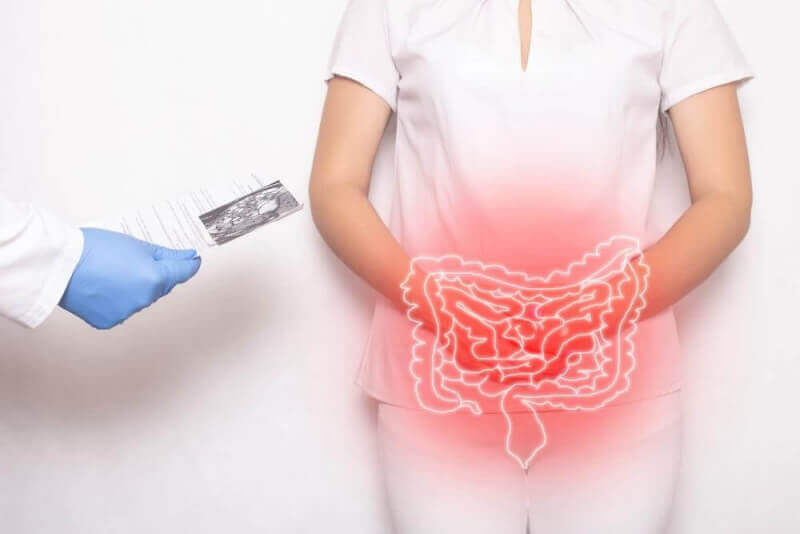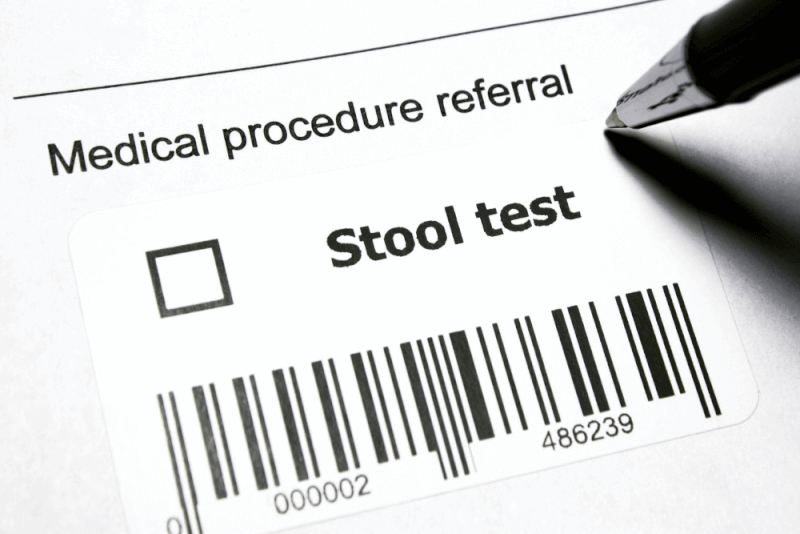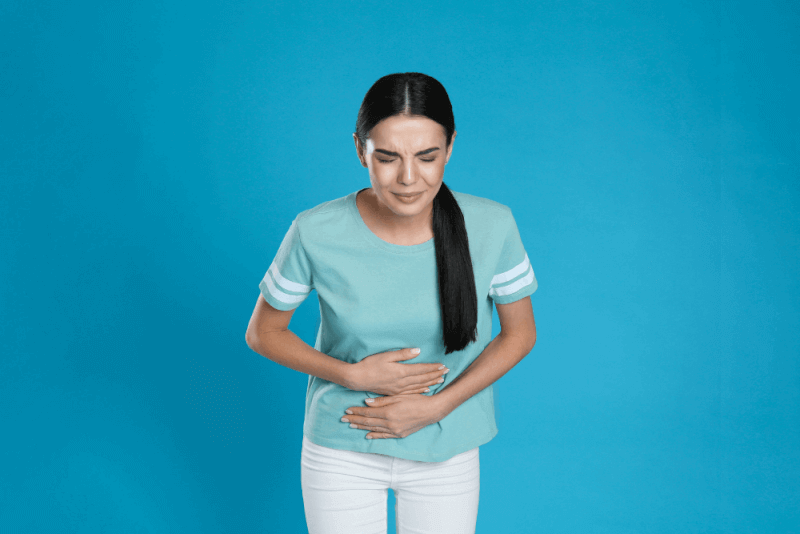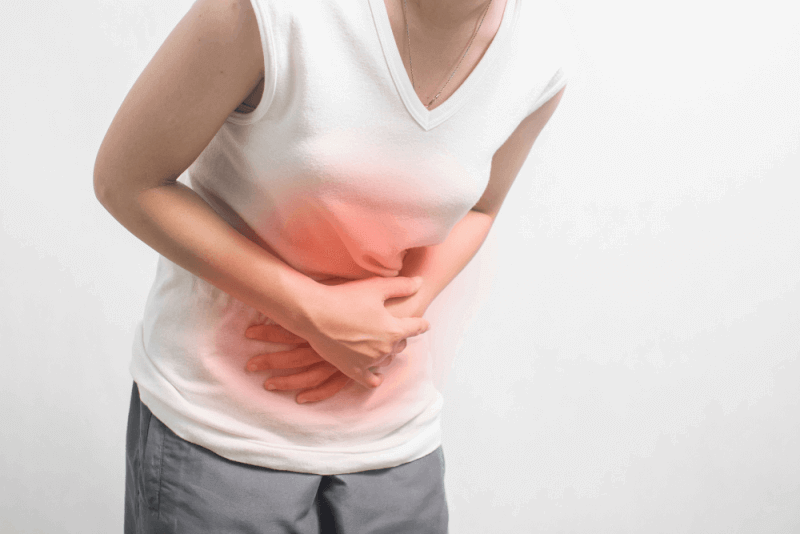What is colitis?
Colitis can be defined simply as inflammation of the large intestine. Colitis is an inflammatory response of the intestinal mucosa to viruses or bacteria. In addition to causing ulcers in the intestines, colitis is generally divided into acute and chronic. Crohn's disease and ulcerative colitis are the most common intestinal inflammatory diseases in the society.
Colitis diseases progress in a certain process. This process is divided into three. These are exacerbation, aggravation and remission. Symptoms disappear when the disease is in remission. Treatment of these diseases can prevent complications and halt the progression of the disease.
Causes of colitis
The cause of colitis is usually unknown. However, among the causes of colitis that can be identified are the following:
- Increased population of certain bacteria in the large intestine
- Necrotizing enterocolitis in newborns
- Radiation transfer to the large intestine
- Lack of blood flow
- Ulcerative colitis
- Crohn's disease
- Food poisoning due to bacteria
- Infections caused by viruses or parasites
Types of colitis
Colitis has many subtypes. These varieties include the following.
Crohn's disease
Crohn's disease is a disease that can affect any part of the digestive system. In addition, it usually causes involvement of the small intestine. Crohn's disease affects not only the superstructure of the intestinal tissue but also deeper tissues.
Ulcerative colitis
The parts of the intestine affected in ulcerative colitis include the large intestine and rectum. Approximately 95% of the symptoms caused by ulcerative colitis, an inflammation of the lining of the large intestine, occur in the rectum. In addition, ulcerative colitis usually spreads upwards from the anus and along the entire large intestine.
Symptoms of ulcerative colitis include the following. Symptoms vary depending on the severity of the disease and the intensity of the inflammation.
- Eye inflammation
- Mouth sores
- Skin problems
- Nausea
- Joint pain
- Swelling in the joints
- Weight loss
- Loss of appetite
- Blood coming from the anus
- Rectal pain
- Fire
- Diarrhea
- Abdominal pain
- Noises coming from the abdomen
In case of severe attacks, shortness of breath and irregular heartbeat are also among the symptoms seen in patients.
Ulcerative colitis is divided into different types. The underlying reason for the diversification of ulcerative colitis is the site and severity of inflammation. Types of ulcerative colitis include the following:
- Fulminant colitis
- pancolitis or universal colitis, which causes inflammation of the entire colon
- Inflammation of the left side of the large intestine, starting from the rectum, is called left-sided colitis.
- Inflammation of the rectum and a small part of the colon adjacent to the rectum is called proctosigmoiditis.
- Inflammation of the rectum is called ulcerative proctitis.
The causes of ulcerative colitis are not known exactly. However, it is thought to be caused by the immune system attacking healthy tissues. It is also thought to be genetic as it is more common in some ethnic groups. More common in people over 30 years of age, the findings that ulcerative colitis is caused by environmental causes have not been proven by studies.
The reason why ulcerative colitis is so important is that it increases the risk of colon cancer if left untreated. There are also other diseases caused by ulcerative colitis. It is possible to list these diseases as follows:
- Inflammation of the joint between the bones of the spinal cord
- Risk of clotting
- Liver diseases, although rare
- Sepsis
- Immune system collapse
- Excessive water loss
- Bleeding in the intestines
- Column puncture
- Thickening of the large intestine wall
Allergic colitis
Allergic colitis, a type of colitis usually seen in children, is caused by cow and soy milk. Symptoms include the following:
- Bloody stool
- Diarrhea
- Constipation
- Nausea
- Abdominal pain
- Gas
Microscopic colitis
Microscopic colitis, which is responsible for 20% of diarrhea, especially in older people, is one of the most difficult types of colitis to diagnose. Although endoscopic imaging is normal in microscopic colitis, the diagnosis can be made by examining samples taken from the intestinal mucosa by various methods. For this reason, a biopsy is essential for a definitive diagnosis of microscopic colitis.
The causes of microscopic colitis are not yet fully understood. In addition to genetic predisposition, it can also be caused by excessive reactions of the large intestine to certain foods. There is also a strong link between autoimmune diseases and microscopic colitis.
Symptoms of microscopic colitis primarily include diarrhea. In chronic diarrhea seen in all ages, microscopic colitis should be investigated first. During the research, it is necessary to take samples from many parts of the large intestine.
Infectious colitis
Infectious colitis is the most contagious type of colitis. It is defined as inflammation of the colon in the large intestines where stool is formed. The symptoms seen in infectious colitis can cause gastroenteritis and IBD-like symptoms. These symptoms include the following:
- Weight loss
- Loss of appetite
- Fire
- Nausea
- Abdominal pain
- Vomiting
- Watery or bloody diarrhea
Infectious colitis is divided into different types. The types of infectious colitis and their causes are as follows:
- Viral colitis caused by adenovirus, norovirus, cytomegalovirus and rotavirus.
- Bacterial colitis caused by bacteria such as Mycobacterium tuberculosis, Campylobacter jejuni, Clostridum difficile, Salmonella, Yersinia enterocolitica and Escherichia coli.
- Entamoeba histolytica causes parasitic colitis.
- Finally, chlamydia, HIV, Herpes simplex1 and 2, gonorrhea and syphilis cause sexually transmitted colitis.
Ischemic colitis
Involuntary colitis, which occurs when there is a temporary decrease in blood flow to part of the large intestine, is usually caused by a narrowing of the blood vessels supplying the colon. In addition, low blood pressure can also cause involuntary colitis. Reduced blood flow reduces the oxygen supply to the cells, which can lead to damage to the colon tissue. More common in people over 64 years of age, the causes of involuntary colitis include the following:
- Heart failure
- Surgical interventions that damage the blood supply to the arm
- Diabetes
- Arteriosclerosis
- Receiving radiotherapy treatment
- High blood pressure
- Having a stroke
- Peripheral arterial disease that causes blood circulation to be affected
- Smoking
- Traumatization
- Anemia
- Colon cancer
Isthmic colitis can occur in any part of the colon. However, it often causes pain on the left side of the abdomen. On the other hand, involutive colitis causes symptoms that are often confused with other digestive problems. These symptoms include the following:
- Nausea
- Diarrhea
- Urgent urge to go to the toilet with rapid bowel movement
- Bright red or maroon blood in the stool
- Blood output without feces
- Sudden onset of pain, cramping or tenderness in the abdomen
In some cases, medication may be needed to treat ischemic colitis. However, it is usually a type of colitis that heals on its own.
Pseudomembranous colitis due to antibiotic use
Pseudomembranous colitis, an inflammation of the lining of the large intestine, is caused by complications related to antibiotic use. The most common cause of the disease is Clostridium difficile infection. Excessive growth of this bacterium in the intestines causes colitis. Normally, these bacteria are part of the intestinal flora. But the good bacteria prevent Clostridium difficile from overgrowing. However, the use of antibiotics reduces the populations of good bacteria and may lead to an increase in the population of harmful bacteria. This results in pseudomembranous colitis.
Collagenous colitis
Collagenous colitis, one of the types of infectious colitis, is caused by an infection in the large intestine. The collagen layer in the lower layer of the lining of the colon causes diarrhea because it prevents water absorption from the intestines. Especially people with diarrhea lasting longer than a2 weeks and involuntary weight loss should consult a doctor.
Spastic colitis
Although the cause of spastic colitis is not fully understood, it is also known as nervous colitis. Spastic colitis, which is seen especially in people under emotional pressure and stress, is a type of colitis that is 2 times more common in women than in men. The characteristic symptom of spastic colitis is diarrhea or constipation.
Radiation colitis as a side effect of radiotherapy
This type of colitis, also called radiation colitis, is a side effect of radiotherapy as part of cancer treatment. Radiotherapy causes damage to the intestines, which can lead to colitis.
Lymphocytic colitis
White blood cells are involved in the development of lymphocytic colitis. White blood cells are also called lymphocytes and when they accumulate in the inner wall of the large intestine, lymphocytic colitis occurs.
Colitis diagnostic methods
In order to diagnose colitis, physicians first take the patient's history and then perform a physical examination. Blood and bagpipe tests are also performed. In addition, a colonoscopy is performed to examine the internal structure of the large intestine and finally a biopsy is performed if necessary.
Symptoms of colitis
Since there are different types of colitis, it is possible for the symptoms to vary. However, common symptoms of all types of colitis include the following:
- Joint pain
- Swelling in the joints
- Redness of the eye
- Burning sensation
- Impairment of liver function
- Skin rashes
- Discharge from the anus
- Vomiting
- Fire
- Tremor
- Blood in the stool
- Diarrhea
- Constipation
- Anemia
- Bloating
- Abdominal pain and cramps
Colitis treatment
Because there are different types of colitis, the treatment of colitis also differs and treatment varies according to each type of colitis.
Treatment of pseudomembranous colitis
Since antibiotics cause pseudomembranous colitis, the first step in treatment is to stop the use of antibiotics. Symptoms improve after stopping the use of the drug. However, if the symptoms do not improve, antibiotics are required for Clostridium Difficile, which causes the disease. In case of recurrence of the disease, surgical intervention is an option. In addition, it is important to pay attention to diet to prevent recurrence of the disease. These changes include the following:
- Avoiding spicy foods
- Avoiding fried foods
- Increasing the number of meals consumed during the day
- Choosing soft and easily digestible foods
- Avoiding coffee, tea, carbonated drinks and alcohol
- Drinking plenty of fluids
Treatment of ischemic colitis
The severity of the disease is important in planning the treatment of ischemic colitis. This is because most of the complaints caused by involuntary colitis are temporary. Among the methods that can be used in the treatment of ischemic colitis are the following:
- Surgical intervention is performed in case of perforation of the colon or obstructions in the intestine.
- Hormone, migraine and some heart medications that cause narrowing of blood vessels may need to be stopped.
- If the causative agent of involuntary colitis is heart failure or another disease, then this health problem must be eliminated.
- In patients with blood clots, medicines can be used to dissolve the clots.
- A water diet, antibiotic use and close observation may be sufficient for mild attacks of involuntary colitis.
Treatment of spastic colitis
Since there is no inflammation in stress-related spastic colitis, there is no need for antibiotics. For this reason, it is usually sufficient to use constipation or diarrhea relieving drugs in the treatment of spastic colitis. In addition, it is recommended to seek psychological support to combat stress.
Treatment of microscopic colitis
Microscopic colitis is a type of colitis that usually heals on its own. However, long-term treatment may also be necessary, although this is rare. Microscopic diet treatment usually involves diarrhea medication and diet.
Colitis nutrition
Although diet is not thought to be the cause of colitis, making some dietary changes can help control ulcerative colitis in particular. The diets recommended for each patient should be different. Necessary tests are required to determine the appropriate diet. Among the points that colitis patients should pay attention to are the following:
- Reducing meals
- Frequent meals
- Drink plenty of fluids
- Avoiding caffeine, carbonated drinks and alcohol
- Using food supplements
- Following high-calorie diets will prevent patients from losing weight involuntarily.
- Especially in people with ulcerative colitis, milk and dairy products may need to be excluded from the diet as lactose intolerance may also be observed.
- Because colitis reduces the absorption of fat in the intestines, the diet should be low-fat. Otherwise, fatty foods will cause symptoms to increase.
- It is also necessary to pay attention to salt consumption in order to slow down bowel movements and reduce cramps. These symptoms improve when colitis patients remove salt from their diet.
- Finally, gluten sensitivity is also common in colitis patients. For this reason, gluten may need to be removed from their diet.
Keeping a food diary
To organize your diet, you should start by keeping a food diary. This diary can help you recognize when certain foods worsen symptoms. In this way, problematic foods can be eliminated from the diet. However, it is necessary to talk to the physician before removing foods from the diet. Because the vitamins and minerals that need to be taken must be taken in full.
If a new food is to be tried, then only one different food should be tried per day. This makes it easy to determine whether the food is causing any problems.
Low-residue diet
Consuming low-residue and high-fiber foods, especially during the exacerbation period, is effective in improving symptoms. These diets are designed to reduce the amount and frequency of stools.
Examples of a low-residue diet include the following foods:
- Egg
- Lean meat
- Fish
- Cooked vegetables
- White rice
- Low-fiber pasta
- Noodles
- Non-whole grain breakfast foods such as cereals
- White bread
Is colitis contagious?
There are infectious and non-infectious forms of colitis. There are also infectious and non-infectious forms of the same type of colitis.
- Microscopic colitis is not contagious.
- Many forms of infectious colitis are contagious. However, there are also non-contagious forms. Among these, involutive colitis is one of the non-contagious types.
- Pseudomembranous colitis is contagious.
- Allergic colitis is not contagious.
- Ulcerative colitis is not contagious.
- Crohn's disease is not contagious.
- There are infectious and non-infectious forms of proctitis colitis.
- There are also infectious and non-infectious forms of enteritis colitis.















